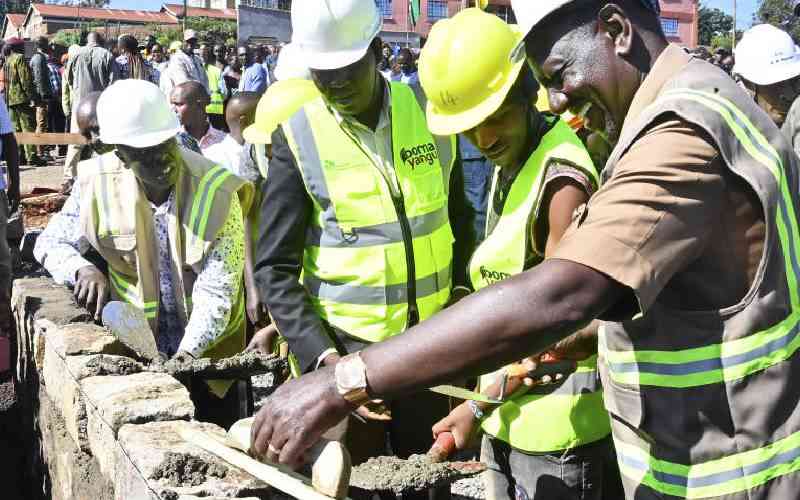By Pascal Mwandambo
Taita Taveta, Kenya: With her feet half buried in the water, Hannah Kijala frantically scoops out sand from the Voi river bed with a shovel.
It is scorching hot but she does not seem to feel the heat. This is her source of daily bread and she has to work no matter what.
Kijala is a member of Sere Kwa Wose Women Group in Tanzania village, Voi who apart from dealing in sand harvesting also undertake environmental activities.
“We have established a tree nursery in our village, part of whose seedlings we intend to plant by the river banks,” Kijala said.
She says the recent move by the government to slap a blanket ban on sand harvesting is not a good idea as this is a source of livelihood for hundreds of youth in the area as well as being a source of vital material used in the construction industry.
Conservation efforts
Kijala said residents also need to be empowered on how they can exploit sand as a resource and at the same time conserve this valuable water source
“We are aware of the grave danger that uncontrolled sand harvesting can have on this important water source. We have therefore taken the initiative to protect the river banks by ensuring we leave enough sand to hold the river bed in place,” she said.
Previous efforts to rehabilitate the Voi River both by the then Voi Municipal Council and other Ngos have been short-lived.
There have been no lasting solutions in sight and on many occasion, the National Environment Management Authority (Nema) has been accused of burying its head in the sand as this vital water source is laid to waste through unsustainable sand harvesting, block making by the river banks and stone harvesting.
However, speaking to The Standard, Taita –Taveta CEC in charge of environment and natural resources, engineer Elijah Mwandoe, said this is about to change.
“We are coming up with a raft of measures to safeguard Voi River from total destruction including establishing special sand harvesting locations where the exact amount of sand harvested shall be documented,” he said.
Mwandoe also said that going forward, lorries accessing the sand harvesting sites will be required to use designated routes to and from the sites and at all times stay at least 50 metres away from the river banks.
“Further still, upon completion of sand harvesting, the harvesters will be required to plant the right tree species in the gullies left behind,” he said.
Stay informed. Subscribe to our newsletter
Past efforts
Residents have welcomed this move by the county government even as they remember that a couple of years ago the Water Resources Management Authority (WRMA) had come up with a proposal to rehabilitate Voi River all the way to Aruba Dam in Tsavo East National Park.
The project, which was valued at Sh500 million, included the setting up of sand dams at various points along the river bank in order to hold back sand and reduce erosion. However the project never took off.
In fact, apart from a local sisal factory which occasionally drains effluent into the Voi river, the town’s officials are also to blame since they drain the town’s sewage into the river.
Voi River’s pollution poses a serious environmental threat to wildlife in Tsavo East National Park that drink water from Aruba Dam.
And as though factors already assailing this river are not enough, it has also been invaded by the notorious Mathenge weed locally known as Mrashia.
 The Standard Group Plc is a
multi-media organization with investments in media platforms spanning newspaper
print operations, television, radio broadcasting, digital and online services. The
Standard Group is recognized as a leading multi-media house in Kenya with a key
influence in matters of national and international interest.
The Standard Group Plc is a
multi-media organization with investments in media platforms spanning newspaper
print operations, television, radio broadcasting, digital and online services. The
Standard Group is recognized as a leading multi-media house in Kenya with a key
influence in matters of national and international interest.
 The Standard Group Plc is a
multi-media organization with investments in media platforms spanning newspaper
print operations, television, radio broadcasting, digital and online services. The
Standard Group is recognized as a leading multi-media house in Kenya with a key
influence in matters of national and international interest.
The Standard Group Plc is a
multi-media organization with investments in media platforms spanning newspaper
print operations, television, radio broadcasting, digital and online services. The
Standard Group is recognized as a leading multi-media house in Kenya with a key
influence in matters of national and international interest.








